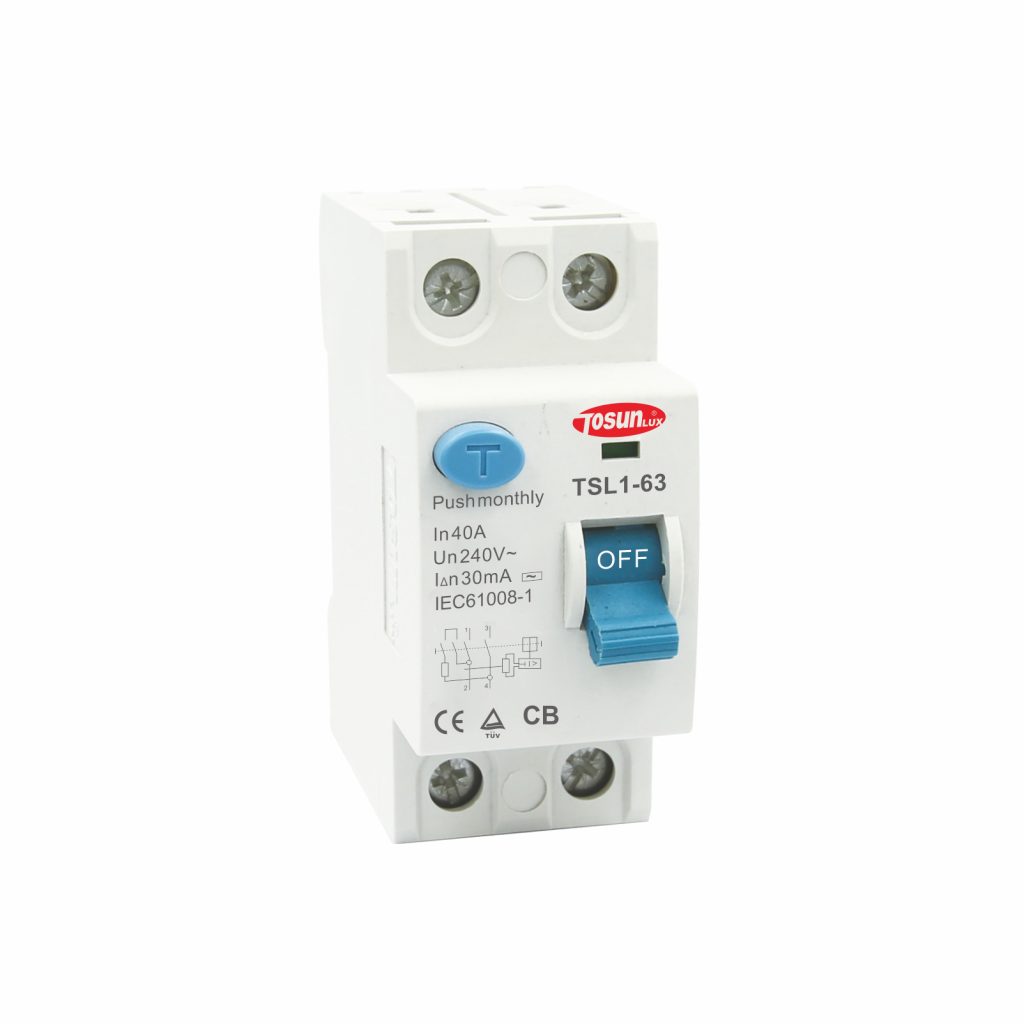What Is RCD, RCB, Or RCCB?
Table of Contents
ToggleResidual Current Devices (RCDs), along with RCCB circuit breakers and RCB devices, are essential in modern electrical systems. These devices detect current imbalances, cutting off power to prevent electric shock or fire during faults.
Let’s explore how they work, compare their types, and understand why they’re vital for safety.
Key Differences Between RCD, RCB, and RCCB
To help clarify the differences between each type and help you choose, here’s a comparison chart:
| Feature | RCD Device | RCB Device | RCCB Circuit Breaker |
| Primary Function | Detects electrical leakage, disconnects power | Cuts off power during leakage | Disconnects power for fault protection |
| Typical Applications | Residential, industrial, commercial | Mostly residential | High-sensitivity settings like commercial |
| Sensitivity Level | High, fast-response | Moderate, varies by model | High, for sensitive circuits |
| Polarity Sensitivity | Not polarity-sensitive | Polarity-sensitive | Not polarity-sensitive |
| Current Handling | Both AC and DC models | Generally AC only | AC or DC, depending on the system |
What’s The Working Function of Residual Current Device?
RCD is a device that maintains a simple flow of current. It is appropriate because it maintains the balance of the current between source and machines. There is a transformer, used in this case. It is called a core balance transformer. It has two windings. Primary winding and secondary winding. The secondary winding is very sensitive. As primary winding is connected to the source, it can easily detect the faults in the current flow.
So when faults will be detected, no further current will flow to the electric devices through the secondary winding. The leakage will be sensed by the core when the electric flux will penetrate it. There is a fixed ratio of the current flow. When it goes up with 60 to 80% power, then it symbolizes risks. As it is done automatically, installing it will be beneficial.
Why Installing RCD is Important for Your House or Industry?
One of the important cases is being discussed above. In many cases when a short circuit happens, a rapid amount of electricity passes through the wires and can cause huge destruction to the device. But other than that, it can cause body current to the device. Again, in industrial places, more than one machine is connected to the same power source. Even some machines are directly connected to other machines. So can you imagine what will happen when a sudden fault appears on the power source? It will hamper everything, will cause a huge loss, and sometimes fire is the end result.
Fuses and circuit breakers are great salvations. But these are not enough. Why? Because though these are good to make a path for the excessive current flow, it can’t help when a man touches the current source. In easy words, the current will flow to the earth through the human body by destroying his life. RCD can help you. As it is very sensitive before the current rises, it will help you to protect yourself and your machines. So, RCD is an essential thing to install. Don’t push your luck, allow it and live a safer life.

Protect your circuits with our selection of RCDs and RCCBs. Contact Tosunlux for competitive pricing and bulk order options!
What is RCB or RCCB?
- RCB and RCCB can be different in abbreviations but they are basically the same things. RCB stands for Residual Circuit Breaker and RCCB stands for Residual Current Circuit Breaker. It is used as a circuit breaker in residential places to save your electrical devices from massive destruction due to a high voltage supply. High voltage or high current whatever it is if those are being generated due to sudden faults. Through this discussion, you’ll be given some beneficial points to install it. Those are as follows.
- RCCB is a great thing to protect human lives. It is true that it is a circuit breaker and it breaks the circuit when overload happens. But its prime focus is to protect human lives only. It can disconnect the current source but can’t reduce the damage completely.
- You can say it is a negative point about RCCB or RCD. It can’t help you when a short circuit happens. The configuration of this device is so simple. And it has light components within it. So it can’t help to rescue your devices. It will insulate the machines’ bodies so that no shock will be raised.
- RCCB’s prime objective is to protect a household from dynamic stress and thermal damages. Do you know RCCB is a wide device? It is wide because the series connections here are made with special modifications. Whatever you have MCB or Fuse, it will be adjusted with any device.
- RCCB has a very low price. As it has the simplest configuration ever, you can have it at a very short price. You can even use it in industrial areas apart from residential places. It is very easy to install. A basic level of knowledge regarding wiring can help you with this.
What’s The Importance of RCCB or RCD?
Probably, you are questioning yourself what’s the importance of the device when it is not protecting any devices? There are many rural areas where people with not too much worth are living their lives. All of them have ambitions to grow, ambition to stand upon their feet. Electricity always matters. So in such a situation applying other expensive devices won’t be possible for them. For them, for the time being, RCCB can be a great help. So, it is recommended to install an RCCB at home.
Here’s a video on Differences between RCD – RCCB and RCBO, i hope it will be helpful for you.
Why Use an RCD Device?
Using an RCD device or an RCCB circuit breaker in electrical setups offers several advantages:
Enhanced Safety: RCDs help reduce the risk of electric shock. When an electrical fault is detected, the device quickly disconnects power, lowering the risk of injury and preventing fires.
Cost-Effective Protection: Using an RCCB circuit breaker can save on potential repair costs. By protecting appliances and wiring from electrical faults, RCDs help avoid costly damage.
Wide Applicability: RCDs are versatile, available in different forms and ratings for various needs. Whether for homes, offices, or industrial sites, they offer essential safety features that adapt to unique environments.
Compliance with Safety Standards: In many regions, regulations require RCDs in new buildings. Installing these devices ensures compliance with electrical codes and safety guidelines, meeting both legal and practical requirements.
How RCDs Work
RCDs function by detecting any imbalance between live and neutral wires. If the outgoing current doesn’t match the returning current, the device quickly cuts off power.
This fast disconnection prevents severe injury by limiting the duration of any electrical fault.
- Typical Response Time: RCDs generally respond within milliseconds, stopping current flow almost instantly. This speed reduces the chance of electric shock and helps safeguard equipment.
- Sensitivity to Leakage: Depending on the model, RCDs can detect very low levels of current leakage, making them suitable for sensitive applications like healthcare facilities.
FAQ
What is an RCD? How does it work?
An RCD monitors current flow, cutting power when there’s a difference between outgoing and returning current. This helps prevent shocks and fires.
Where are RCDs commonly used?
RCDs are commonly used in homes, workplaces, and industrial sites, particularly where appliances or water sources increase shock risk.
Can an RCD handle both AC and DC?
Yes, some models are designed for both AC and DC, providing flexibility in different systems.
What’s the difference between RCDs and an RCCBs?
An RCCB is a specific type of RCD, typically with more refined features for detecting leakage in sensitive circuits.
Why should RCDs be inspected regularly?
Regular testing ensures that RCDs work correctly and continue to provide reliable protection against electrical faults.
Conclusion
Every device is playing its role. Whether it is RCCB, RCBo, MCB, or RCD. Everything has separate working functions. But the ambition of all these devices is the same. To protect human life. All of these electrical devices are easy to install and highly protective.
So, hire an electrician to install it right now. Don’t do any delay as it can lead your or others’ lives to an unwanted end. Know the Differences between all the devices, check out your budget, know your needs according to industrial pressure or household capacity, then select the perfect one.
Tel: +86-577-88671000
E-mail: ceo@tosun.com
Skype: tosunelectric
Wechat: +86-139 6881 9286
WhatsApp: +86-139 0587 7291
Address: Room No.1001 Wenzhou Fortune Center,Station Road, Wenzhou, China
REQUEST A QUOTE
WhatsApp us
 : +86-139 0587 7291
: +86-139 0587 7291 English
English Español
Español Русский
Русский Français
Français العربية
العربية Português do Brasil
Português do Brasil Українська
Українська Türkçe
Türkçe Polski
Polski Nederlands
Nederlands Italiano
Italiano Bahasa Indonesia
Bahasa Indonesia हिन्दी
हिन्दी اردو
اردو አማርኛ
አማርኛ Հայերեն
Հայերեն ไทย
ไทย Монгол
Монгол فارسی
فارسی Shqip
Shqip Ελληνικά
Ελληνικά



